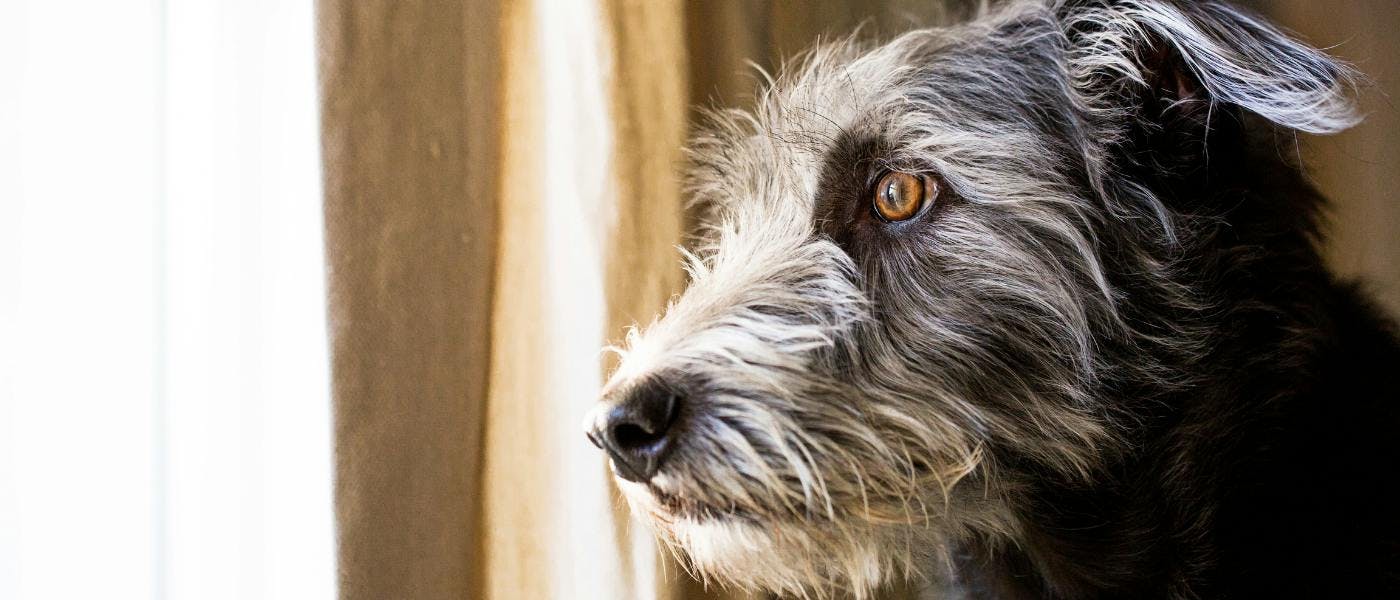A Veterinarians Guide To Canine Separation Anxiety
It’s estimated that up to 40% of dogs in the US today experience some degree of separation anxiety, which is upsetting for both dogs and dog owners to overcome. Separation Anixety is a very important topic as unwanted dog behavior is one of the most commonly cited reasons for surrendering dogs into shelters.
Veterinarian Dr Steph Wenban BVSc MRCVS is here to give us an exclusive overview of what causes separation anxiety in dogs, and how as pet owners we can help.
What is Separation Anxiety?
Separation Anxiety is a term to describe any collection of stressed out behaviors that your dog may display when you leave, due to their attachment to you.
The most common signs of separation anxiety in dogs are:
- Vocalizations such as howling, barking, whining and crying
- Destructive behaviors such as chewing or digging
- Inappropriate toiletting
Why are some dogs really severely affected when others aren’t at all?
There’s a range of things that can influence your dog’s personality and their confidence from being left alone. Factors such as age, breed and genetics play a role with companion dogs such as Yorkshire Terriers, Maltese and Labradors being much more upset when you leave them.
Early life experiences and the temperament of your dog’s mother can also have some bearing, as poorly socialized puppies or those from anxious mothers are more likely to be anxious in later life.
Also any negative or scary experiences that may have occurred once you’ve left can shape your dog’s personality. So, for example, if your dog has been left alone during a burglary or a thunderstorm, they are much more likely to associate this fear with being away from you.
Our dogs are also really sensitive to routine. And if they’re used to you working at home all day and suddenly you go out and start a job, your dog’s likely to become very upset by that sudden change in their routine.
How to calm a dog with separation anxiety
There are some small changes that you can make right away to naturally calm your dog’s separation anxiety. Firstly, make minimal fuss when you leave the house. Your dog will start to learn signals that you’re preparing to go, such as reaching for the car keys or putting on your shoes, which can trigger this anxiety. So just mixing up your leaving routine up can remove the anticipation.
Secondly, make minimal fuss on your return. Your dog is anxious to be away from you and has been waiting for your return. Giving them a big fuss when you get home will serve to reinforce to your dog how fun you are to be around and how alone they are when you’re not there.
How to fix separation anxiety in your dog
There are several different fixes, depending on how severely affected your dog is by you leaving.
Those who are very severely affected are likely to need a combination of approaches. This could include medications to help rebalance their brain chemistry, as well as behavioral therapy with a certified dog behaviorist or a certified dog psychologist.
Those who are less severely affected are more likely to benefit from a combination of supportive approaches. So this could include calming supplements or behavioral training. You can start building a safe and calm environment for your dog right away, using a bed or a crate to provide a safe haven and positive reinforcement to gradually increase the amount of time that they’re left alone in their safe spot. This low and slow method is a way of working on building your dog’s confidence slowly whilst you’re away from them.
Front Of The Pack have launched a revolutionary new calming product called Harmony/products/harmony, a gentle, non-drowsy blend of adaptogens to help promote a stress-free sense of calm for your dog in under 90 minutes.
